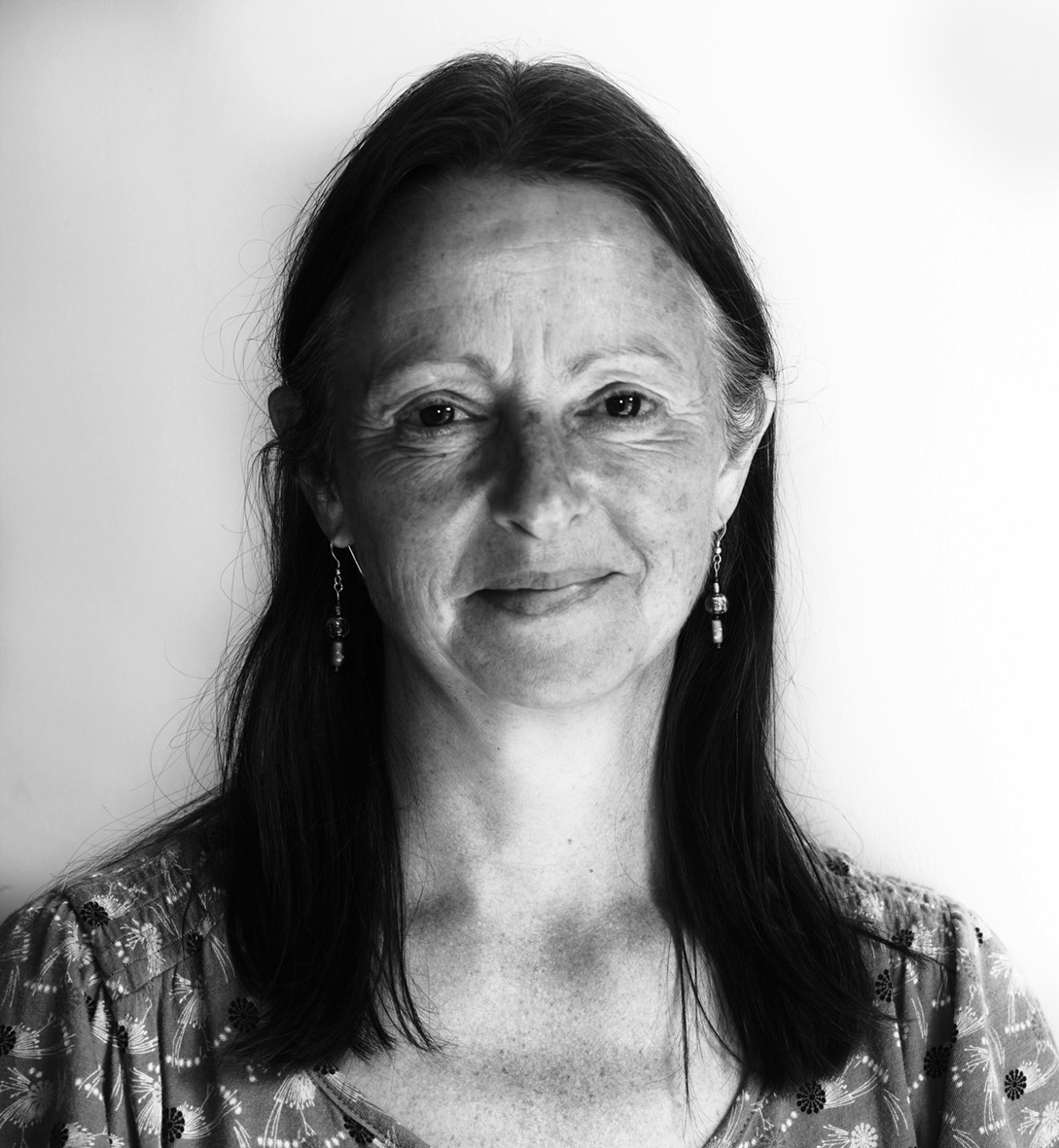The landscape of Lower Wensleydale is one of narrow lanes that swoop and curve following the swell of the land. Bordered by drystone walls and fences, they cross rivers on old stone bridges or undulate between flail-cut hedges and ivy-covered trees. Close by are the moors, where curlews cry and sandy tracks lead among the heather. This is the landscape that has inspired the work of Simon Palmer, one of Britain’s leading watercolour artists.

Simon has lived in a village near Masham for 30 years. He was born in Yorkshire in 1956, his dad a railwayman, but the family moved to south London when he was eight months old. Somehow though, Yorkshire was always in his blood.
“When you’re growing up, you don’t realise how alien you can feel to an area,” he says. “I was depressed and claustrophobic in London. Then I went to Reigate Art School to do a Graphic Design and Illustration course. An important moment was when the tutor encouraged me to go out into the countryside and draw.”

While staying with friends in a cottage in Lastingham in 1976, Simon fell in love with the landscape of North Yorkshire. His etchings were selling well and he was able to move up north, where he tried living in different valleys, including Teesdale in Durham, which he found beautiful but bleak.
At last, he discovered this corner of Wensleydale. He says that when he saw his current home in the village, set in its agricultural, slightly domestic landscape, he thought “This is it!” And it was there that he met his wife Tink, who lived in a nearby village.
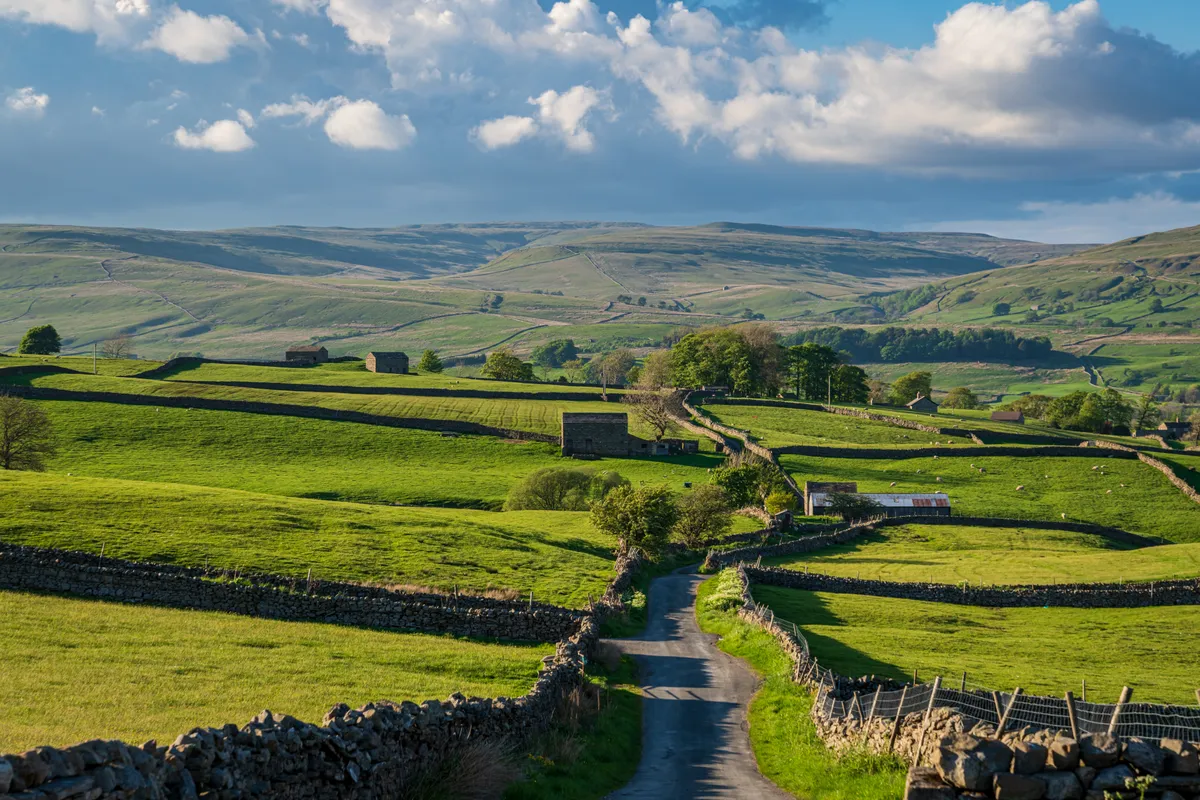
Since leaving art school in 1977, Simon has always been an artist, never having another job. Every weekday he works in his studio, a converted garage next to the house. His routine is to read fiction for an hour before starting in the studio at 10am and working until 7pm, with a half-hour break for lunch with Tink.
The walls of his studio are covered in postcards and prints. There’s an Eric Ravilious calendar, images of Paul Nash paintings, photographs of landscape and chalk-cut hill figures. Shelves sag under the weight of sketchbooks and books about art.

Simon has started on a new painting that is taped on to a sloping board beneath an Anglepoise lamp. To his right is an open book with a drawing that he is working from, one that was done in a few minutes while sitting in his Land Rover. It has a loose, free quality but the essential elements of the layout are there: the verticals of tree trunks, the bend in a lane, the curve of a wooden fence.
With no computer or mobile phone, Simon has no distractions while working. “I don’t miss them,” he says, “but I do listen to Radio 3.”
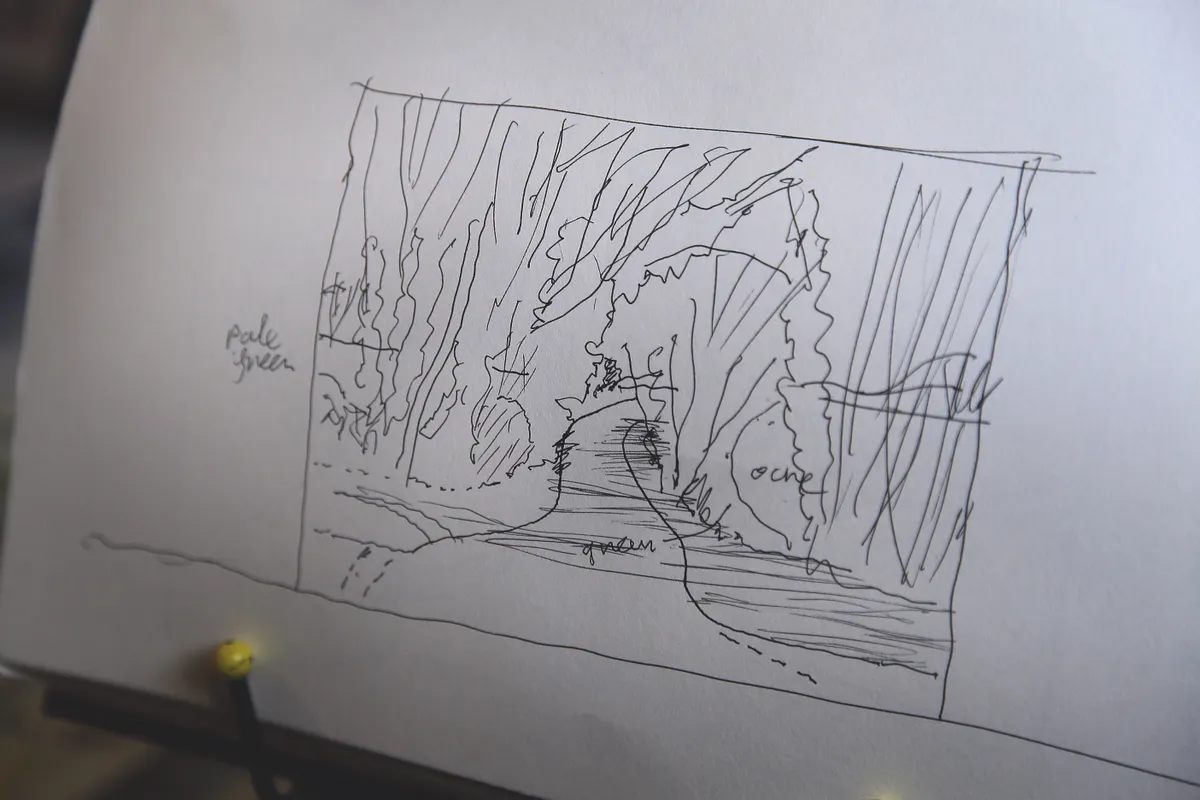
“The paper I use – Arches 610 gsm 100% cotton paper – is heavy enough not to need stretching,” he explains. “I apply a creamy yellow wash over the landscape area, leaving the sky white for vibrancy. I draw first in pencil, then in pen and ink before rubbing out the pencil marks.” Next he adds layers of watercolour; some, in areas such as the trees, using dry-brush technique.
It is in the way that he uses pen in the drawing of foliage that you can see the influence of Victorian landscape painter Samuel Palmer, as well as the early engravings of Graham Sutherland.

Simon says he has a photographic memory and can absorb information as he walks. “I couldn’t work from photographs. The lens is deceiving and plays tricks with what you see. At art school I was given a camera with a wide-angle lens. It helped me to see the landscape and accentuate the perspective, and I do that automatically now.”
There’s a particular quality to the countryside in this part of Yorkshire. “The area near Masham is neither lowland agricultural nor Pennine bleakness,” says Simon. “I love geography and this area is classified as the North Pennine Fringe. I call it the estuary of Wensleydale.”
He is fascinated by place names and finds that maps are a great help in coming up with titles for his paintings: Halfpenny Green Lane, Low Thorpe, Swinney Beck Bank. “The names of places can be historic and are often derivations of the Nordic,” he adds. “I love words and I write as well.”
Simon’s paintings are figurative but not photographic. Semi-abstract, they are a blend of abstraction in the shapes – rectangles, curves, circles – and identifiable features. The colour palette is muted; he says he is more interested in tone and texture than colour.
By restricting colour, he creates more impact for a focal point, such as the vibrancy of a red road sign or the emerald glimpse of a distant field. His trees aren’t specific species – they are organic forms of pattern and texture, trunks often swaddled in thick ivy.
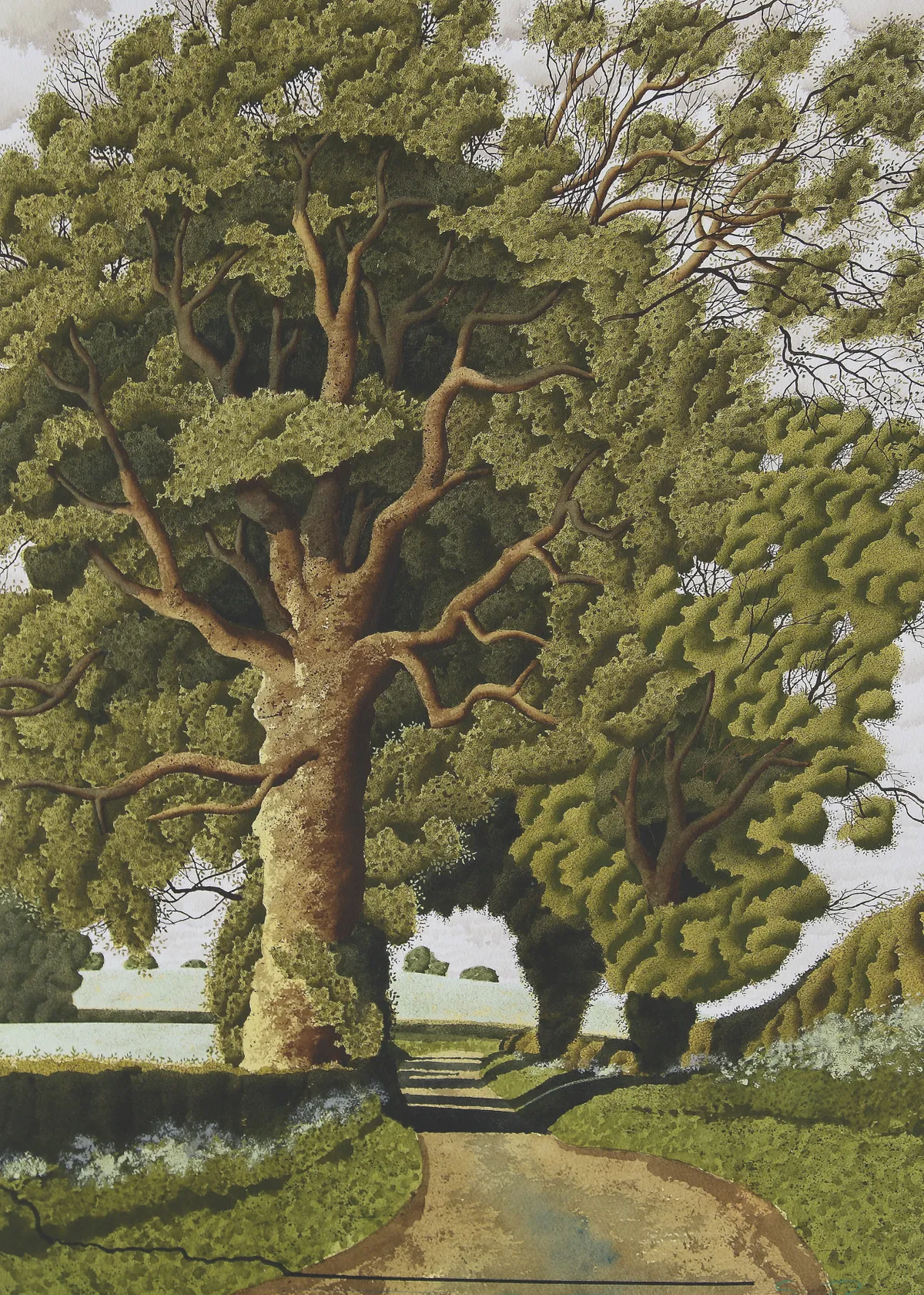
Favourite images recur in Simon’s work. Gateposts topped with finials and entrances leading to unseen driveways, stone bridges and abandoned railway arches. There are mysterious figures in his earlier work, sometimes strange and unsettling, whose stories we want to learn. These visionary figures that appear in the familiar settings of minor roads or woodlands recall Stanley Spencer (1891–1959), whom Simon says he “worships”.
Other influences are the Nash brothers, especially Paul Nash (1889–1946), with his Surrealist view of English landscape.
“I have weaned myself off doing figures and I want to avoid sentimentality,” he says, “but I like to include the human element in the land, the road markings, gates and bridges. Above all, I aim for the spiritual atmosphere of the place.”
Look at a Simon Palmer painting and your eye travels around it, following a lane as it curves into the distance, wondering what is around the corner. After a while, you notice anomalies: a faded sign, a shadow from something out of the frame.
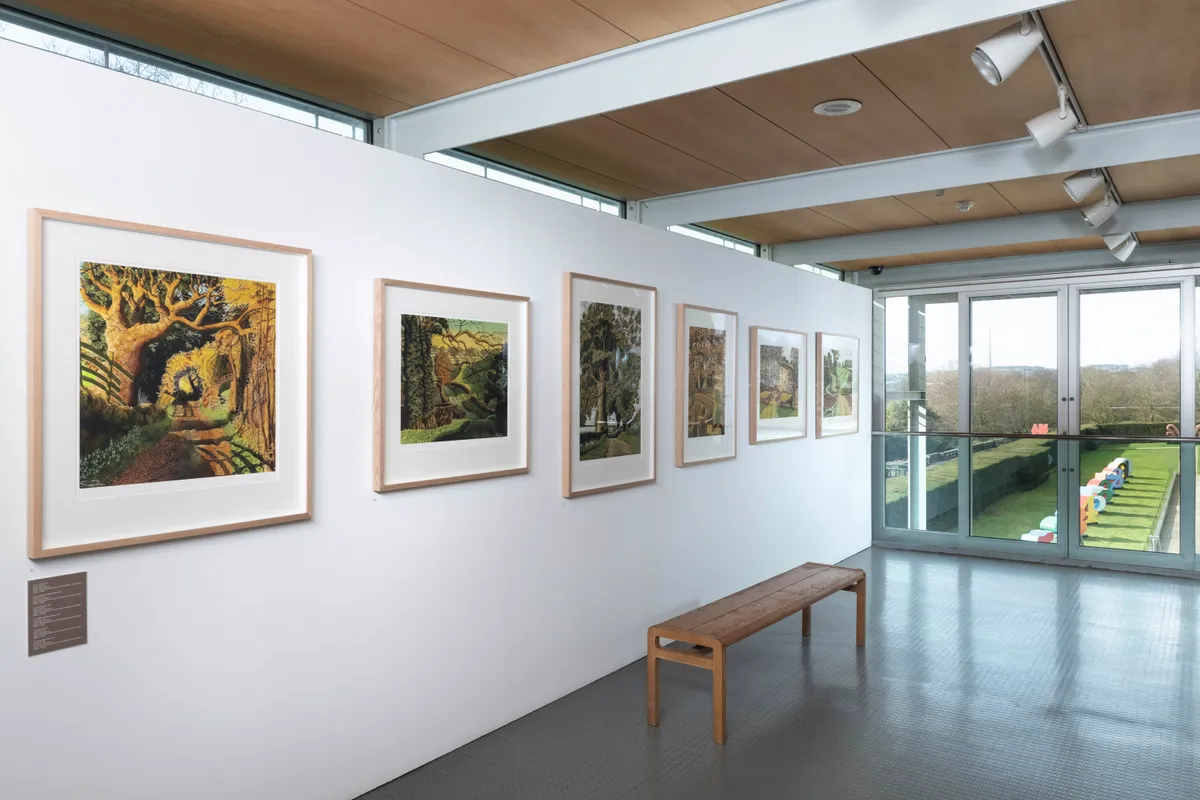
A solo exhibition of limited-edition prints of Simon’s work, Observation of Landscape, is showing until 11 June at Yorkshire Sculpture Park.
“I’m thrilled they asked me to exhibit,” he says. “It’s lovely to be acknowledged in Yorkshire where I have such a sense of spirituality in the landscape. My soul is here. I’d be devastated if I had to be anywhere else.”
There are some artists whose work makes us see the world around us in a new way. Simon finds inner meaning in the landscape, what Paul Nash called “the things behind”.
Now, the winding lanes of Wensleydale, the copses and tree stumps, the railway bridges and old stone churches are seen afresh as Simon Palmer landscapes.
• Simon Palmer’s work will be on display at the Yorkshire Sculpture Park from 4 March to 11 June. Yorkshire Sculpture Park, West Bretton, Wakefield WF4 4JX. Open daily; standard entry costs £9.
Yorkshire Sculpture Park
The first of its kind in the UK, Yorkshire Sculpture Park is the largest sculpture park in Europe, sitting in 202 hectares of parkland at Bretton Hall in West Yorkshire. This ‘gallery without walls’, founded in 1977 by Sir Peter Murray, is set in a beautiful 18th-century landscape, with its woodlands, follies and lake. There are some 100 sculptures and installations to discover, with a changing programme of exhibitions.

